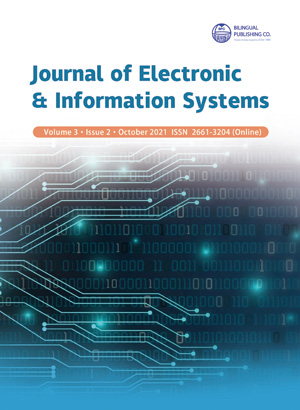-
6468
-
1726
-
1199
-
1115
-
1084
The Adoption of E-learning by Students in Zimbabwean Universities in the Wake of COVID-19
DOI:
https://doi.org/10.30564/jeisr.v3i2.3722Abstract
COVID-19 effects have been felt in the education sector worldwide where schools, colleges, and universities were closed as a way to reduce the spread of the deadly pandemic and loss of lives. The Ministry of Higher and Tertiary Education. advocate that no child should be left behind during the COVID-19 era, therefore gave a directive for universities to use other alternative means of teaching and learning to continuously provide teaching and learning to students during the series of lockdown. An efficient eLearning system in universities is very important as an alternative to faceto-face teaching and learning in this COVID-19 era to have continuity in teaching and learning during the induced lockdowns. Success in online learning can be achieved by understanding the level of readiness of online learning environments. The main objective of the study was to evaluate the adoption of online learning by students in Zimbabwean universities. A descriptive online survey employing questionnaires to collect data on the adoption of eLearning by Zimbabwean universities students was used. Results indicated various eLearning platforms have been introduced in Zimbabwean universities though there is a need for eLearning infrastructure to be availed, students to be trained or students to effectively adopt the eLearning.Keywords:
ELearning, COVID-19, Adoption, Lockdown, Pedagogy, Support, ImplementationReferences
[1] A. Schleicher, “The impact of COVID-19 on education: Insights from education at a glance 2020,” OECD J. Econ. Stud., pp. 1-31, 2020.
[2] M. Alipio, “Education during COVID-19 era: Are learners in a less-economically developed country ready for e-learning?,” ZBW - Leibniz Inf. Cent. Econ. Kiel, Hamburg, 2020.
[3] O. E. Maravanyika, Implementing educational policies in Zimbabwe, vol. 91. 1990.
[4] The Ministry of Primary and Secondary Education, “The national non-formal education for Zimbabwe: Promoting alternative pathways to increase access and quality education in Zimbabwe the national non-formal education policy for Zimbabwe,” 2015.
[5] T. Mukeredzi, “Under pressure, the government closes universities and schools,” University World News, 2020.
[6] T. A. A. KENAN, E-LEARNING IMPLEMENTATION IN THE SCHOOL OF ENGINEERING AT TRIPOLI A thesis submitted to the University of Huddersfield in partial fulfillment of the requirements for the degree of Doctor of Philosophy The University of Huddersfield. 2015.
[7] A. KENAN, T., PISLARU, C. OTHMAN, A. & ELZAWI, “‘The social impact and cultural issues affecting the e-learning performance in Libyan Higher Education institutes’.,” Int. J. Inf. Technol. Comput. Sci. (IJITCS). ISSN I 2091 - 1610|, vol. 12, no. 1, pp. 50-56.
[8] K. Heng and K. Sol, “Online learning during COVID-19: Key challenges and suggestions to enhance effectiveness,” Cambodian Educ. Forum, no. December, pp. 1-15, 2020.
[9] Euro Group Consulting, “Leading positive transformation,” 2021.
[10] A. Schleicher, “THE IMPACT OF COVID-19 ON EDUCATION INSIGHTS FROM EDUCATION AT A GLANCE 2020.”
[11] J. A. D. Doculan, “E-L Earning R Eadiness a Ssessment T Ool F or Philippine Igher E Ducation I Institutions,” Int. J. Integr. Technol. Educ. Vol.5, vol. 5, no. 2, pp. 33-43, 2016.
[12] A. A. Alqahtani, “The Effectiveness of Using E-learning, Blended Learning and Traditional Learning on Students ’ Achievement and Attitudes in a Course on Islamic Culture : an Experimental Study,” Durham University, 2010.
[13] B. Stauffer, “What’s the difference between online learning and distance learning? The Applied Education System,” 2020.
[14] U. Leif, E., Grové, C., Alfrey, L., Laletas, S., & Sharma, 5 tips on how unis can do more to design online learning that works for all students. The 13 Conversation. 2020.
[15] V. Ilie, “Traditional Learning Versus E-Learning,” pp. 1192-1201, 2019.
[16] J. Cable and C. Cheung, “Eight Principles of Effective Online Teaching: A Decade-Long Lessons Learned in Project Management Education,” PM World J. Eight Princ. Eff. Online Teach., vol. VI, no. Vii, pp. 1-16, 2017.
[17] T. FitzPatrick, “Key Success Factors of eLearning in Education: A Professional Development Model to Evaluate and Support eLearning.,” Online Submiss., vol. 9, pp. 789-795, 2012.
[18] A. Lee-Post, “e-Learning Success Model: an Information Systems Perspective,” vol. 7, no. 1, pp. 61- 70, 2009.
[19] C. Coman, L. G. Țîru, L. Meseșan-Schmitz, C. Stanciu, and M. C. Bularca, “Online teaching and learning in higher education during the coronavirus pandemic: Students’ perspective,” Sustain., vol. 12, no. 24, pp. 1-22, 2020.
[20] M. F. Ramli, M. Majid, and B. Badyalina, “Impeding Factors Towards the Effectiveness of Online Learning During Covid-19 Pandemic among Social Sciences Students,” Int. J. Learn. Dev., vol. 10, no. 4, p. 37, 2020.
[21] W. O. Oyediran, A. M. Omoare, M. A. Owoyemi, A. O. Adejobi, and R. B. Fasasi, “Prospects and limitations of e-learning application in private tertiary institutions amidst COVID-19 lockdown in Nigeria,” Heliyon, vol. 6, no. 11, 2020.
[22] M. Bączek, M. Zagańczyk-Bączek, M. Szpringer, A. Jaroszyński, and B. Wożakowska-Kapłon, “Students’ perception of online learning during the COVID-19 pandemic: A survey study of Polish medical students,” Medicine (Baltimore)., vol. 100, no. 7, p. e24821, 2021.




 Paul Sambo
Paul Sambo





